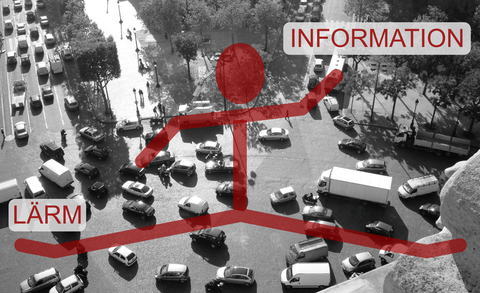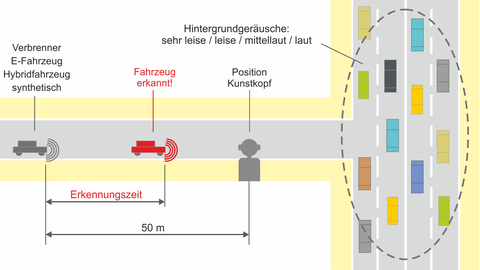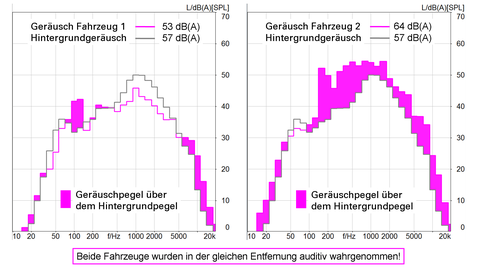Acoustics in electromobility
Acoustic signals are always carriers of information. The informative meaning of product sound includes messages about the product (identity, performance, material, etc.), current operating condition, malfunction or correct action, quality, environment, and emotional or aesthetic characteristics. Sound Designer constructs signal that, when heard, produce certain physical, affective, cognitive or psychomotor responses. These should be needed in the sense of the product. For the field of vehicle sound design, this means a reduction in the transmission of essential information.
A challenge for the legislature on one hand and the vehicle manufacturer on the other will be a balancing act between keeping the vehicles as quiet as possible and providing sufficient information to "weak" road users.
With an increasing use of electric vehicles in road traffic, there is a growing need to determine the perceptibility of vehicle exterior sounds by a normal passer-by. In urban traffic, situations often arise where even normally sighted pedestrians trust in their auditory perception as a result of their experience. In the future, however, the pedestrian should be able to concentrate more on their visual perception of the "quieter traffic". Blind and visually impaired people, however, continue to rely on acoustic information.
An interview was conducted with visually impaired people on the basis of which a traffic situation was selected for examination.
This situation shown in the picture with an approaching vehicle represents a typical, safety-relevant traffic situation for visually impaired persons, in which a pedestrian has to make a crossing decision.
The distance in which an approaching vehicle is perceived depends on the sound of the vehicle and the ambient noise perceived in parallel. Constellations that are particularly common in urban traffic are side roads without signal systems or pedestrian crossings. Depending on the noise level of the rest of the traffic environment, which is often characterized by adjacent main roads, passers-by manage the auditory perception of individual vehicles gets better or worse.
In order to detect perceptually relevant frequency ranges of the combustion sound, the third-octave levels of two vehicle sound levels at the time of detection are shown in the figure. In both diagrams, the background noise spectrum is shown in gray for comparison. The vehicles show very different level differences. The noise of the left vehicle protrudes only a few third octave of a few dB (A) out of the background and is nevertheless detected quickly enough. The right vehicle has a dominant third octave, with more than 10 dB (A) elevation and is still not recognized better.
One might assume that the detectability of vehicle sound correlates with the level of its sound pressure level - that this is not the case as shown in the figure.
The diagram plots the detection time above the A-weighted sound pressure level at the time of detection for 30 vehicle sounds. The low correlation suggests that there must be more complex correlations in sound detection, which gives reason to hope that quieter (than current combustion sound) but still easily detectable sounds will be generated.
Contact
Mitarbeiter
NameMr Dr.-Ing. Robert Rosenkranz
Send encrypted email via the SecureMail portal (for TUD external users only).
Professur für Akustik und Haptik
Professur für Akustik und Haptik
Besucheradresse:
Barkhausenbau, Raum BAR 60 Helmholtzstraße 18
01062 Dresden
None




